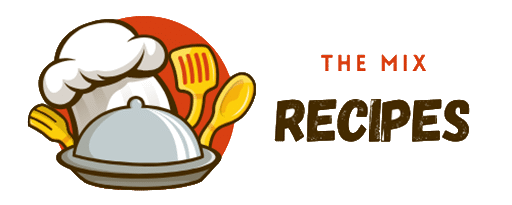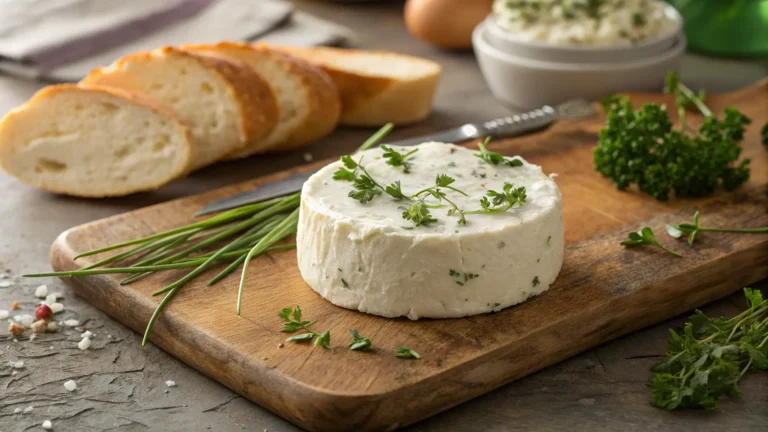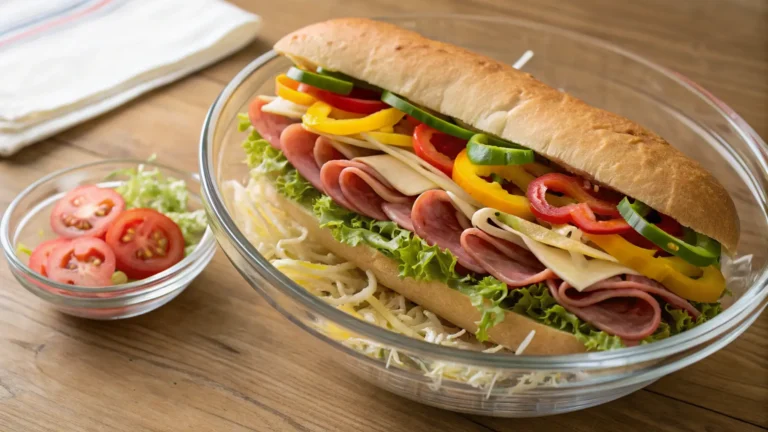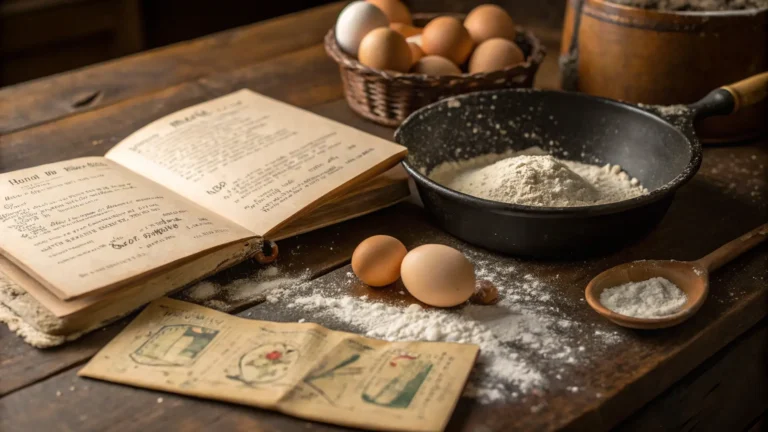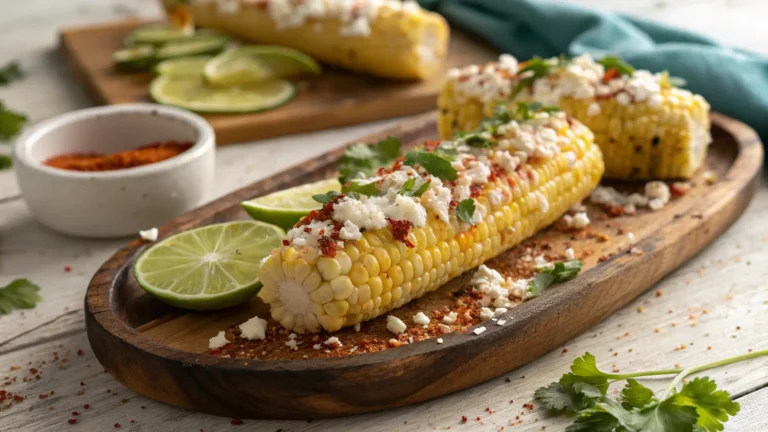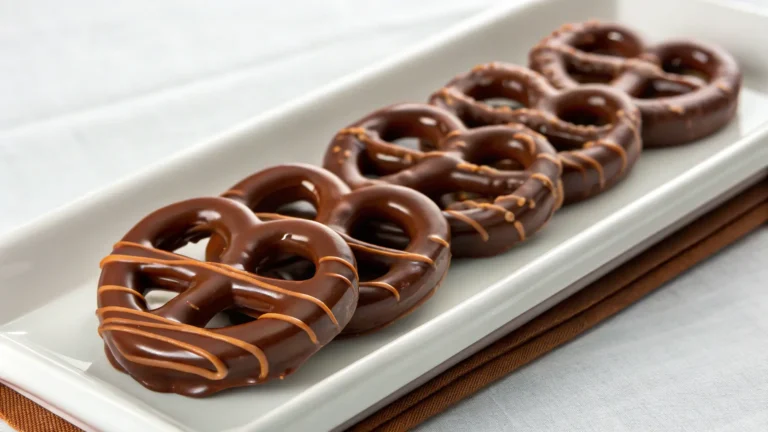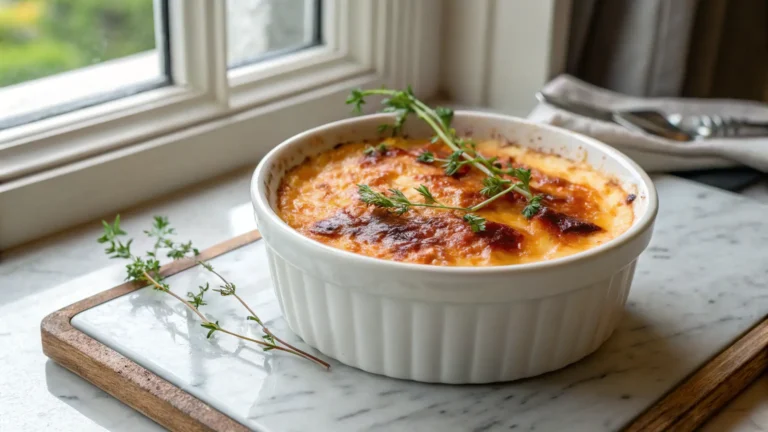Baby Puree Recipes – The Best 2025 Guide for Homemade Meals

Table of Contents
Starting your little one’s food journey? You’re in the right place. Whether you’re prepping for the first spoonful or leveling up from simple fruits to flavorful combos, baby puree recipes are the perfect starting point. This guide explores how to make your own baby food at home, which purees are best by age, and why homemade is often healthier and cheaper than store-bought jars.
With these nutritious baby puree recipes, you’ll be able to introduce your baby to new flavors, support their growth, and build a strong foundation for a lifetime of healthy eating. Learn more about creating variety-packed meals even early on — Don’t miss our smoked fish brine recipe for flavor inspiration beyond the puree stage.
Introduction to Baby Purees
What Are Baby Purees and Why They Matter
Baby puree recipes are smooth, nutrient-dense blends of fruits, vegetables, or meats prepared especially for infants beginning solid foods. At around 4–6 months, when babies show signs of readiness (like sitting up or reaching for your food), introducing purees becomes an exciting developmental milestone.
Not only are purees essential for introducing new textures and flavors, but they also provide essential nutrients that support brain development, immunity, and digestion. Using simple baby puree recipes made at home helps you control ingredients, avoid added sugars or preservatives, and tailor nutrition to your baby’s needs.
When and How to Start Introducing Purees to Your Baby’s Diet
Most babies are ready for their first baby puree recipe around four to six months, but always check with your pediatrician first.
Signs your baby is ready:
- Sitting up unassisted
- Loss of tongue-thrust reflex
- Interest in watching others eat
- Doubling of birth weight
Start with 1–2 tablespoons of a single-ingredient puree, such as mashed sweet potato or avocado, and gradually build up. Offer new purees every 3–4 days to check for allergies.
When you prepare your own baby puree recipes at home, you’re not only saving money — you’re offering your child a wider variety of nutrients and flavors from the start.
Check out venison steak recipes once your baby progresses to thicker textures and protein-packed solids.
Best First Baby Puree Recipes for Beginners
Simple 1-Ingredient Purees to Start With
When it comes to starting solids, simplicity is key. The best baby puree recipes for beginners are often those made with just one wholesome ingredient. These purees are easy on your baby’s stomach and help you watch for any allergic reactions.
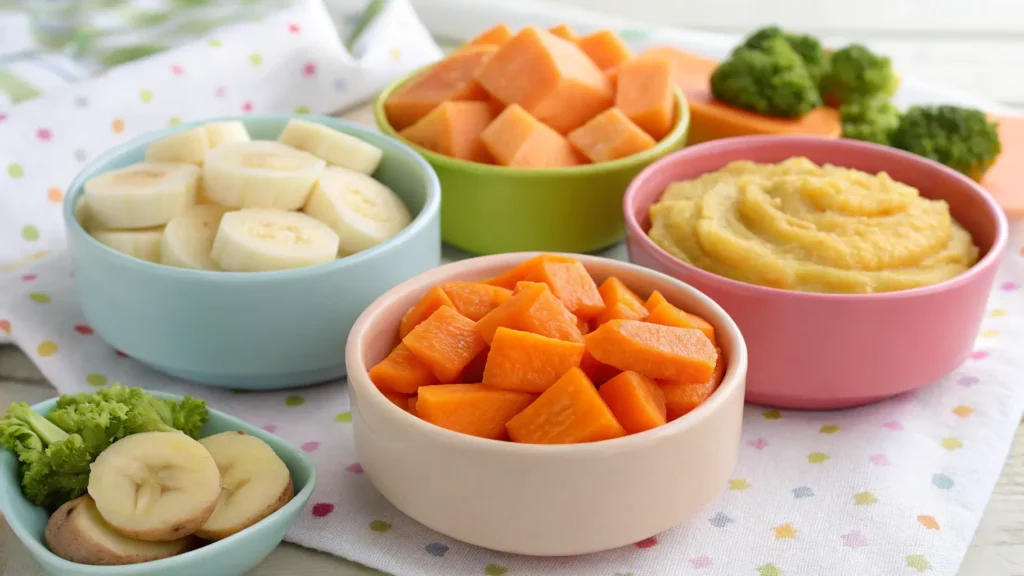
Here are the top beginner-friendly baby purees to try first:
| Ingredient | Benefits | Prep Method |
|---|---|---|
| Avocado | Healthy fats, brain development | Mash or blend raw |
| Sweet Potato | High in fiber, vitamin A | Steam and blend |
| Banana | Potassium-rich, easy to digest | Mash raw with fork |
| Carrots | Rich in beta-carotene | Steam until soft, then puree |
| Apples | Mild and sweet, great for digestion | Peel, steam, and puree |
| Pear | Gentle on the tummy, adds sweetness | Steam and mash/blend |
Each of these baby puree recipes should be smooth, without chunks, and served at room temperature. Add a little breast milk, formula, or water to thin out thicker blends.
Start by offering one puree at a time. Feed 1–2 teaspoons once a day, increasing gradually as your baby shows interest. Wait 3 days before introducing a new food — this makes it easier to spot any food sensitivity or allergic reaction.
What Should My Baby’s First Purees Be?
If you’re wondering where to start, these tried-and-true first baby puree recipes are pediatrician-approved and time-tested by parents everywhere:
- Mashed Avocado: Just mash with a fork — no cooking required. It’s creamy, mild, and full of essential fats.
- Steamed Carrot Puree: Bright orange and naturally sweet, it’s usually well-tolerated and easy to prepare.
- Baked Sweet Potato Puree: Roast or steam, then scoop and blend. Its soft texture and rich flavor make it a baby favorite.
- Banana Mash: One of the easiest first purees. Just peel, mash, and serve.
- Apple or Pear Puree: Peel, steam, and blend. Sweet, smooth, and soothing for new tummies.
These purees give your baby a great introduction to solids. They’re packed with vitamins and fiber, and most importantly — they’re delicious! You can even mix and match these ingredients later for flavorful combos.
Remember to use organic ingredients whenever possible and avoid adding any salt, sugar, or spices at this stage. Your baby is developing their own sense of taste — let them experience each ingredient in its pure form.
Mixing Foods for Baby Purees (Combo Ideas)
What Foods to Mix for Baby Puree
Once your baby has safely tried several single-ingredient purees, it’s time to level up with delicious and nutritious combos. These baby puree recipes go beyond the basics and help your baby explore new flavors, textures, and food groups. Plus, combining ingredients allows for more nutrient-dense meals.
Guidelines for mixing baby food safely:
- Combine foods your baby has already tried individually.
- Stick to simple pairings (2–3 ingredients) to avoid overwhelming their palate.
- Keep textures smooth until they’re ready for a more complex mouthfeel.
Here are some great food combinations to try:
| Combo | Benefits |
|---|---|
| Carrot + Apple | Sweet, mild, packed with beta-carotene |
| Banana + Avocado | Creamy, full of healthy fats and potassium |
| Pear + Peas | Smooth, slightly sweet, fiber-rich |
| Sweet Potato + Chicken | Filling, protein-packed, iron-rich |
| Pumpkin + Quinoa | Great for digestion and brain development |
| Zucchini + Brown Rice | Easy to digest, adds fiber and carbs |
| Spinach + Apple + Oats | Balanced, iron-rich, textured |
These combinations are among the most popular baby puree recipes because they’re flavorful, easy to digest, and packed with nutrients that support development.
To prepare: Cook all ingredients until very soft. Blend together with breast milk, formula, or a bit of water to adjust the texture. Serve warm or at room temperature.
Flavor-Packed Combos That Are Safe and Loved by Babies
Babies love naturally sweet flavors, so pairing veggies with fruits can be a great way to expand their palate while sneaking in nutrients. For example:
- Beet + Pear + Banana – Vibrant, slightly sweet, loaded with fiber and antioxidants.
- Avocado + Mango – Tropical and creamy, perfect for healthy fats and Vitamin C.
- Carrot + Pineapple – Naturally sweet and bright, full of beta-carotene and enzymes.
- Butternut Squash + Apple + Cinnamon – A soft intro to spice (after 6 months) with immune-boosting properties.
Once your baby is around 7–8 months and has adjusted to a variety of purees, you can begin using combos that include grains like oats, quinoa, or couscous — all blended smoothly to avoid choking hazards.
Make sure each combo is smooth, and as always, wait 3 days after introducing a new mixed puree.
Top Fruit and Veggie Purees to Try
What Is the First Fruit for a Baby?
When it comes to introducing fruits through baby puree recipes, the best first options are mild, naturally sweet, and gentle on the digestive system. These fruits are not only packed with essential vitamins but also create a positive feeding experience because of their pleasant taste and smooth texture.
Here are the top fruits for first baby purees:
| Fruit | Nutritional Benefits | Prep Tip |
|---|---|---|
| Banana | High in potassium, supports digestion | No cooking needed — just mash |
| Apple | Vitamin C, easy to digest | Peel, steam, then blend |
| Pear | High in fiber, mild sweetness | Steam and puree for a silky texture |
| Peach | Beta-carotene, hydrating | Peel, pit, steam, and puree |
| Avocado | Full of healthy fats, supports brain growth | Mash raw or blend with breast milk |
| Mango | Antioxidant-rich, vitamin A | Blend raw if ripe |
Introduce fruits one at a time, waiting at least 3 days before adding another to check for any reactions. These baby puree recipes help your baby develop a love for healthy, naturally sweet foods early on.
As your baby progresses, try combining fruits together or pairing them with mild vegetables like carrots or sweet potatoes for more complex flavors.
Nutrient-Rich Vegetable Purees for Baby’s Health
Vegetables are crucial for early exposure to less-sweet tastes, reducing the chance of picky eating later. The best first veggie baby puree recipes are smooth, brightly colored, and rich in essential nutrients like iron, vitamin A, and fiber.
Try these beginner-friendly veggie purees:
| Vegetable | Health Benefits | Prep Method |
|---|---|---|
| Carrot | Beta-carotene for eye health | Steam until soft, then blend |
| Sweet Potato | High in fiber and vitamin A | Bake or steam and puree |
| Peas | Rich in protein and iron | Steam and blend until smooth |
| Zucchini | Hydrating, vitamin C-rich | Peel, steam, and puree |
| Pumpkin | Easy to digest, boosts immunity | Roast or steam then mash |
| Butternut Squash | Sweet flavor, high in fiber and potassium | Peel, steam, and puree |
To get the right texture, blend these veggies with a bit of breast milk, formula, or filtered water. And don’t stress if your baby makes funny faces — veggies are new! It can take up to 10 tries for a baby to accept a new flavor.
You can freeze leftovers in silicone ice cube trays for quick meals later. Just thaw and warm gently.
Best Meat Purees for Babies
What Is the Best First Meat for Babies?
Introducing meat into baby puree recipes can feel intimidating, but it’s one of the best ways to ensure your baby is getting enough iron, zinc, and protein — especially after 6 months when their iron stores begin to deplete.
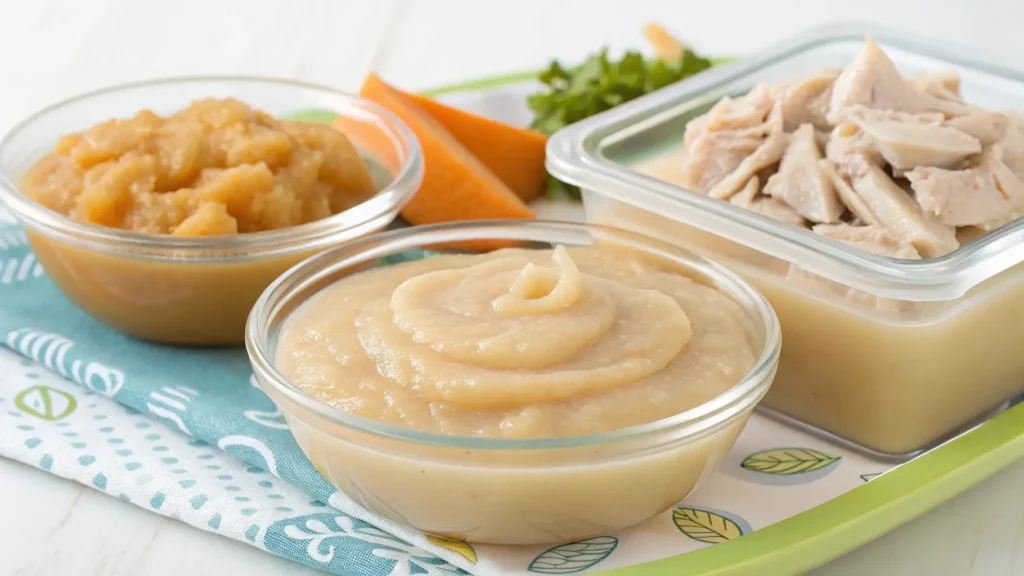
According to pediatric nutritionists, the best meats to start with include:
| Meat | Key Benefits | Baby-Friendly Tip |
|---|---|---|
| Chicken | Lean protein, mild flavor, easy to digest | Use thigh meat for more iron |
| Turkey | High in iron and zinc, low-fat option | Choose dark meat for smoother texture |
| Beef | Iron-rich, supports red blood cell production | Slow-cook for tenderness |
| Lamb | Nutrient-dense and flavorful | Trim fat and blend thoroughly |
| Liver | Superfood status: iron, B12, and vitamin A | Use in small amounts, mix with veggies |
Chicken and turkey are top picks for beginner baby puree recipes because of their mild flavor and soft texture after cooking. Many parents find that steaming or slow-cooking meats before blending results in the best consistency for younger babies.
Chicken vs. Turkey: Which Is Better for Baby’s First Puree?
Both chicken and turkey are great options — but let’s compare them to see which fits your baby’s needs best.
| Feature | Chicken | Turkey |
|---|---|---|
| Flavor | Mild, familiar | Slightly richer, also mild |
| Fat Content | Slightly higher (especially thighs) | Lower fat, leaner option |
| Iron/Zinc | Moderate levels | Slightly higher iron per ounce |
| Texture | Soft when cooked right | Slightly drier, needs more moisture |
Conclusion:
- Start with chicken if you’re looking for a foolproof, soft, beginner-friendly puree.
- Try turkey next for variety, but make sure to add moisture (breast milk or veggie puree) when blending to avoid dryness.
Both can be combined with sweet potatoes, carrots, or apples for nutrient-rich combos that balance protein with natural sweetness — making them more palatable for picky eaters.
To prepare:
- Boil, steam, or slow-cook until very tender.
- Blend with a little water, breast milk, or formula.
- Add a soft veggie or fruit (like pear or pumpkin) for smoother texture.
Check out wagyu ground beef recipes for inspiration when your baby moves into chunkier, protein-rich solids around 10–12 months.
Homemade vs Store-Bought Baby Puree
Is It Really Cheaper to Make Your Own Baby Food?
Short answer: Yes — homemade baby puree recipes are often cheaper and more customizable than pre-packaged baby foods. While the convenience of ready-made jars can’t be denied, making your own allows you to control ingredients, quality, and cost over time.
Here’s a quick comparison:
| Factor | Homemade Baby Purees | Store-Bought Baby Food |
|---|---|---|
| Cost | $0.30–$0.60 per serving | $1.20–$2.00+ per jar |
| Flavor Variety | Unlimited combinations | Limited and often bland |
| Preservatives | None (if fresh) | Often includes ascorbic acid, etc. |
| Freshness | Use fresh or frozen produce | Shelf-stable for 1–2 years |
| Nutrition | Higher — no loss from long storage | May lose nutrients during processing |
| Texture Control | Fully adjustable | One-size-fits-all |
Over the first year, families who prepare homemade baby puree recipes can save hundreds of dollars while offering their baby better flavor exposure and nutrition.
And it doesn’t have to be complicated. Steam, blend, freeze — that’s it. In many cases, you can batch-cook a week’s worth of meals in just one afternoon.
What You Need to Know About Store Options
That said, there’s a time and place for store-bought baby food — especially during travel, emergencies, or busy weeks.
When store-bought baby food might be helpful:
- Traveling or on the go
- No access to fresh ingredients
- Time-constrained parents needing quick options
If choosing packaged food, here’s how to pick better options:
- Look for organic brands with no added sugars or starches
- Check for BPA-free pouches or jars
- Choose blends with no more than 2–3 ingredients
- Always read the label — avoid anything with unrecognizable additives
Still, keep in mind that many shelf-stable baby foods are overcooked, which can lead to reduced nutritional value. They’re often made in bulk, stored for months, and flavored with concentrates rather than fresh whole foods.
Many parents find success using a mix of both methods: homemade when possible, and high-quality store-bought options when necessary.
Homemade vs Store-Bought Baby Puree
Is It Really Cheaper to Make Your Own Baby Food?
If you’re weighing cost versus convenience, the truth is — homemade baby puree recipes are often significantly cheaper than store-bought options. While those tiny jars look harmless on your grocery bill, they add up fast. By making your own baby purees, you not only save money but give your baby meals packed with fresh, unprocessed ingredients.

Here’s a helpful breakdown:
| Factor | Homemade Baby Puree Recipes | Store-Bought Baby Purees |
|---|---|---|
| Cost | $0.30–$0.60 per serving | $1.20–$2.00+ per jar |
| Flavor Variety | Infinite — combine anything you like | Often limited, bland, or overly sweet |
| Preservatives | None (just fresh food) | May contain acids, starches, or salt |
| Freshness | Made fresh daily or weekly | Packaged for shelf life, not flavor |
| Nutrient Value | Higher — less processing | May lose value in high-heat processing |
| Texture Control | You choose the consistency | One-size-fits-all approach |
With homemade baby puree recipes, you’re in control of everything from sourcing to texture to flavor. You can rotate ingredients weekly to keep mealtime exciting and boost nutrient exposure.
Parents who prep baby meals in batches (and freeze in small portions) find they save hundreds of dollars per year—without sacrificing nutrition.
What You Need to Know About Store Options
Still, store-bought baby puree recipes do serve a purpose. When traveling, short on time, or dealing with life’s chaos (which, let’s be real, happens a lot with a baby), these pre-made meals can offer relief.
If you go the packaged route, follow these tips:
- Read ingredient lists carefully — you want real food, not fillers.
- Look for organic baby puree recipes in jars or pouches that contain only 2–3 ingredients.
- Avoid artificial preservatives, added sugars, and “natural flavorings.”
- Choose BPA-free packaging whenever possible.
It’s also smart to taste-test packaged baby purees yourself. Many are overcooked, bland, or too sweet. This can train your baby’s taste buds to reject more balanced, natural flavors later on.
The ideal approach? Use homemade baby puree recipes for your everyday routine, and rely on quality store options as backup — not your main food source.
How to Make Homemade Baby Purees Safely
How to Make Homemade Baby Puree (Step-by-Step Guide)
Making your own baby puree recipes at home doesn’t require fancy equipment or hours in the kitchen. In fact, with just a few tools, you can prepare a week’s worth of meals in under an hour.
Basic Tools You’ll Need:
- Steamer basket or saucepan
- Blender, food processor, or baby food maker
- Freezer-safe containers or silicone trays
- Spoon and small bowls
- Fresh produce and proteins
Here’s a simple 5-step guide to making nutritious baby puree recipes:
- Wash & Peel: Clean produce thoroughly. Peel skins for smoother texture and easier digestion.
- Cook: Steam or boil until soft (fork-tender). Steaming preserves more nutrients.
- Blend: Use a blender or food processor. Add breast milk, formula, or water to adjust consistency.
- Strain (Optional): For younger babies, push the puree through a fine mesh for extra smoothness.
- Cool & Serve or Freeze: Let it cool fully before serving or freezing in portion-sized containers.
| Age | Texture Recommendation | Tips |
|---|---|---|
| 4–6 Months | Thin, runny purees | Use more liquid when blending |
| 6–8 Months | Thicker, smooth consistency | Begin combining ingredients |
| 8–10 Months | Soft mash, some small lumps | Introduce more texture gradually |
Avoid raw honey, salt, sugar, and cow’s milk under 1 year of age.
Storage, Reheating, and Freezing Tips for Freshness
To keep your homemade baby puree recipes safe and flavorful, follow these simple guidelines:
Refrigeration:
- Store freshly made puree in airtight containers.
- Use within 48 hours for maximum flavor and safety.
Freezing:
- Use silicone trays or baby food freezer molds.
- Label each batch with the type and date.
- Freeze for up to 3 months for best quality.
Thawing & Reheating:
- Thaw overnight in the refrigerator.
- For quick use, place frozen cubes in a small pot or bowl and warm using a hot water bath or microwave (stir thoroughly).
- Always check the temperature before feeding.
Safety Reminders:
- Never refreeze thawed puree.
- Always use a clean spoon to avoid introducing bacteria.
- Don’t leave food out for more than 2 hours.
Making homemade baby puree recipes not only ensures your baby is eating fresh, clean food, but it also builds lifelong healthy habits.
Common Questions About Baby Puree Timing and Safety
Is 4 Months Too Early for Purees?
Many parents wonder if introducing baby puree recipes at 4 months is safe. While some babies may show readiness, leading health organizations like the American Academy of Pediatrics recommend starting solids around 6 months.
However, if your pediatrician gives the green light, some babies can safely begin purees between 4–6 months, especially if they:
- Hold their head up without support
- Sit upright with minimal help
- Show interest in what you’re eating
- Have lost their tongue-thrust reflex
That said, it’s best to treat 4 months as a possible window, not a hard rule. If your baby isn’t showing signs of readiness, wait until closer to 6 months.
When Should Babies Stop Having Purees?
While baby puree recipes are perfect for early feeding, they are just the beginning of the solid food journey. Most babies start transitioning out of purees between 8–10 months, depending on their development and feeding skills.
Signs it’s time to move on:
- Your baby grabs at food or utensils
- They start chewing or mashing food with their gums
- They’re bored or disinterested in spoon-fed meals
Here’s a rough timeline:
| Age Range | Feeding Stage |
|---|---|
| 4–6 months | Smooth, single-ingredient purees |
| 6–8 months | Thicker purees, blended combos |
| 8–10 months | Soft mashed foods and tiny chunks |
| 10–12 months | Finger foods and self-feeding |
To encourage texture acceptance, gradually thicken your baby puree recipes over time and introduce soft finger foods like avocado chunks, banana slices, or steamed sweet potato bits.
Safety Tips for Puree Feeding
Even the best baby puree recipes can pose risks if not handled properly. Keep these safety tips in mind:
- Always supervise feeding — never leave your baby unattended with food.
- Avoid choking hazards like whole grapes, large chunks, or nuts.
- No added salt, sugar, or honey (until after 1 year).
- Use small spoons made of silicone or soft plastic.
- Introduce allergens early (like peanut, egg, or fish) if recommended by your pediatrician.
By following the right timing and safety practices, you’ll help your baby develop strong feeding skills while enjoying nutritious, flavorful foods from day one.
Baby Puree Recipe Ideas by Age Group
Puree Meal Plans for 4–6 Months, 6–8 Months, and 9–12 Months
Feeding your baby doesn’t have to be a guessing game. Below are simple, age-appropriate baby puree recipes that meet developmental needs and nutritional goals as your little one grows.
Stage 1 (4–6 Months): First Tastes – Single-Ingredient Purees
These should be very smooth and thin, made from one ingredient only. Introduce one new food every 3–4 days.
Starter Purees:
- Mashed banana
- Steamed carrot puree
- Avocado mash (add breast milk if too thick)
- Baked sweet potato puree
- Apple or pear puree (peeled and steamed)
Serving tips:
- 1–2 tablespoons per feeding
- 1–2 feedings per day
- Always observe for allergic reactions
Stage 2 (6–8 Months): Thicker Textures & Combos
Once baby has tolerated several single foods, start combining them into more filling, flavorful baby puree recipes.
Sample Combos:
| Morning | Midday | Evening |
|---|---|---|
| Apple + Oatmeal | Carrot + Chicken | Banana + Avocado |
| Pear + Quinoa | Pumpkin + Turkey | Peas + Sweet Potato |
Use a fork or blender to slightly thicken the consistency. You can also start mixing in spices like cinnamon or nutmeg (in moderation).
Feeding goals:
- 2–3 feedings per day
- Thicker consistency
- Introduce protein-rich foods (meats, legumes)
Stage 3 (9–12 Months): Chunky Purees & Soft Finger Foods
This is the transition phase where babies move from purees to chewable textures. At this point, you’re not just serving baby puree recipes, but also incorporating soft, mashable solids.
Ideas for This Stage:
- Lentil + veggie mash
- Scrambled egg + mashed avocado
- Ground beef + sweet potato mash
- Mango + cottage cheese puree
- Butternut squash + quinoa + chicken combo
Start introducing finger foods like:
- Small banana slices
- Soft pasta pieces
- Toast strips with mashed avocado
Feeding goals:
- 3 meals a day + snacks
- Practice self-feeding
- Offer water in a sippy cup
This phase builds independence and gets your baby used to family meals.
Progressing to Chunkier Textures and Finger Foods
As you begin tapering off purees, use leftover baby puree recipes as:
- Sauce bases for pasta
- Spreads on toast
- Dips for soft veggies or breadsticks
By age one, most babies should be eating what the family eats — just in smaller, softer forms. Continue offering variety to keep expanding your baby’s food acceptance and love of healthy eating.
Conclusion: Making Baby Puree Recipes a Nourishing and Joyful Journey
Introducing your baby to solids is more than just a nutritional milestone — it’s a bonding experience, a developmental leap, and a chance to shape your child’s lifelong relationship with food. With a little planning, some fresh ingredients, and the right tools, baby puree recipes become an easy, affordable, and deeply rewarding part of your daily routine.
From the first smooth spoonful of banana to nutrient-rich combos like turkey + sweet potato, you’ve now got the knowledge to confidently move through every stage of your baby’s puree journey. You don’t need fancy gadgets or expensive jars — just real food, real love, and a few simple methods to prepare meals your baby will thrive on.
Whether you’re crafting your first carrot mash or mixing up bold new flavors, remember: variety is key, safety comes first, and progress should be paced according to your baby’s cues.
Looking for inspiration? Try our venison steak recipes when your baby graduates to more textured and protein-packed meals.
You’re not just making purees — you’re nurturing curiosity, growth, and health one bite at a time.
FAQs: Baby Puree Recipes – Expert Answers
What foods to mix for baby puree?
Once your baby has tried single foods safely, you can combine ingredients like sweet potato + chicken, banana + avocado, carrot + apple, or pear + peas. Always mix already-tested foods and keep textures smooth.
What is a good puree for babies?
Good baby purees are easy to digest, nutrient-rich, and naturally sweet or mild. Start with avocado, banana, sweet potato, carrots, and apples — all steamed or mashed to a smooth consistency.
What should my baby’s first purees be?
Ideal first purees include mashed banana, steamed carrot puree, sweet potato, apple, and pear. These are gentle on digestion and well-accepted by most babies.
Is it really cheaper to make your own baby food?
Yes! Homemade baby puree recipes cost about $0.30–$0.60 per serving, compared to $1.20+ for store-bought. You’ll save hundreds of dollars annually and get better ingredient control.
When should babies not have puree?
Around 10–12 months, babies should gradually transition to soft solids and finger foods. If your baby shows chewing interest and refuses spoons, it’s time to move on.
What is the best first meat for babies?
Start with chicken or turkey. They’re lean, mild, and blend well. Choose dark meat for more iron and softer texture. Mix with sweet potato or carrot to balance flavor.
Is 4 months too early for purees?
While 6 months is standard, some babies may be ready at 4 months. Watch for signs like head control and interest in food. Always consult your pediatrician first.
How to make homemade baby puree?
Steam or boil produce, blend it smooth, add breast milk/formula if needed, and store in clean containers. Freeze in portions for easy future meals.
What is the first fruit for a baby?
Bananas, apples, pears, and avocados are great first fruits. They’re soft, sweet, and gentle on digestion. Always peel, steam (if needed), and mash well.
Is chicken or turkey better for babies?
Both are great first meats. Chicken is slightly fattier and easier to blend, while turkey is leaner but still iron-rich. Use thigh meat for better texture.
